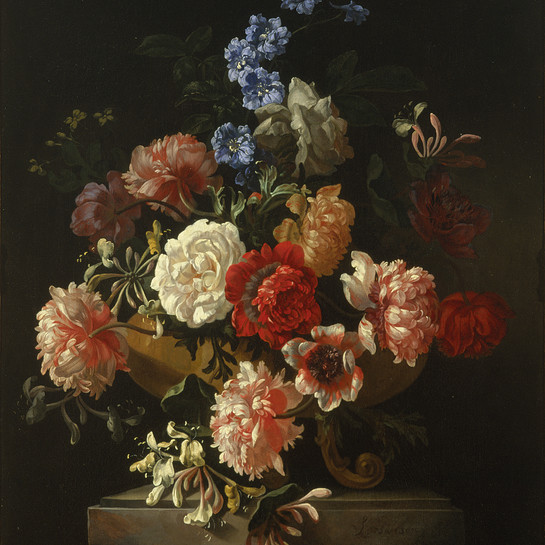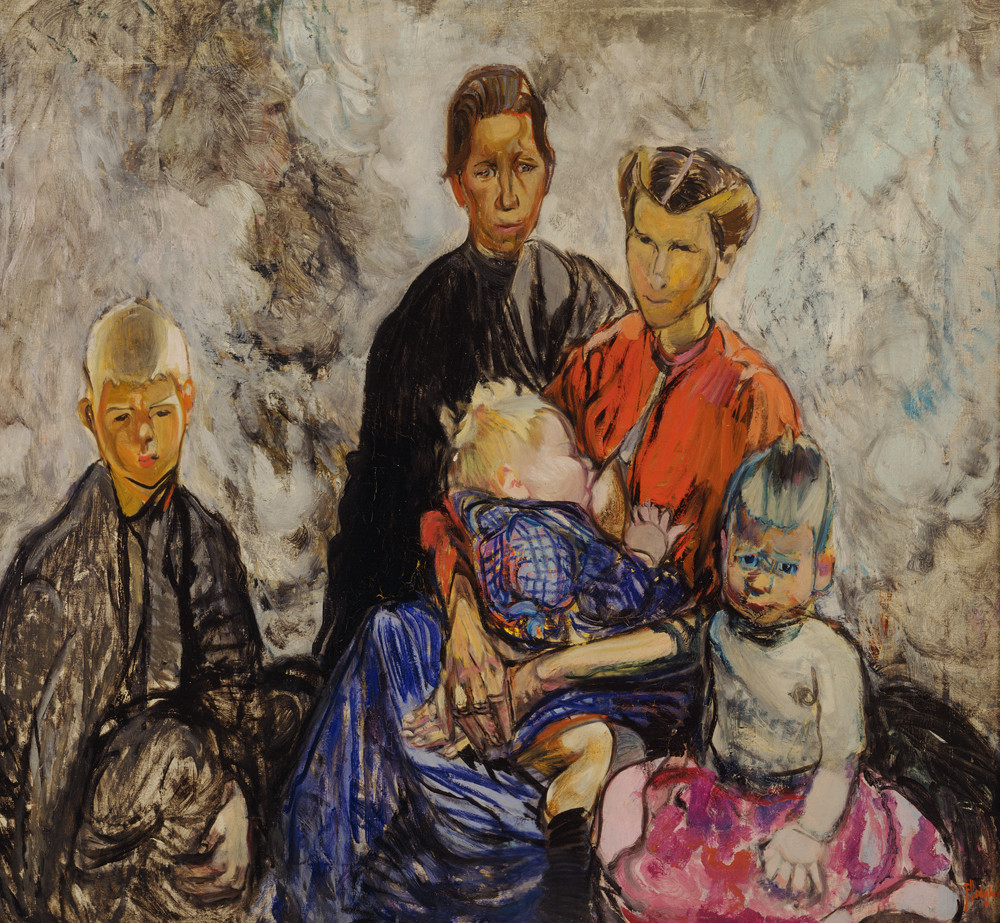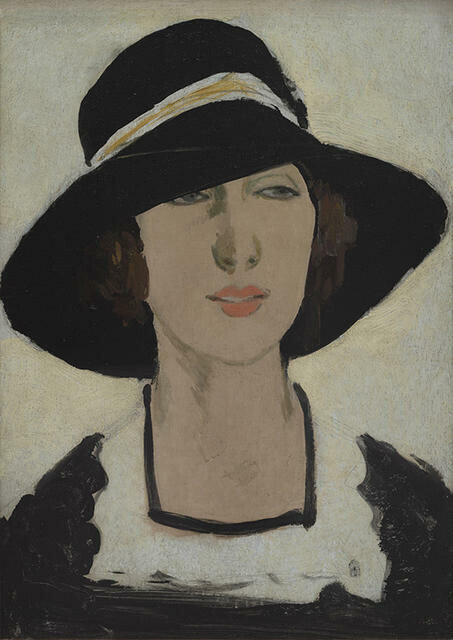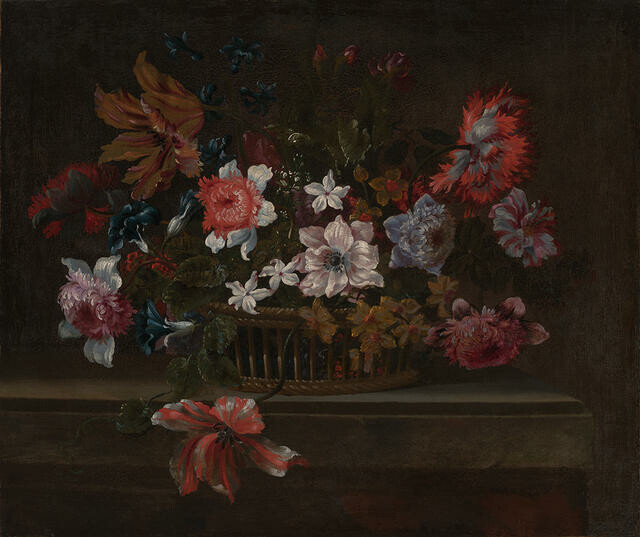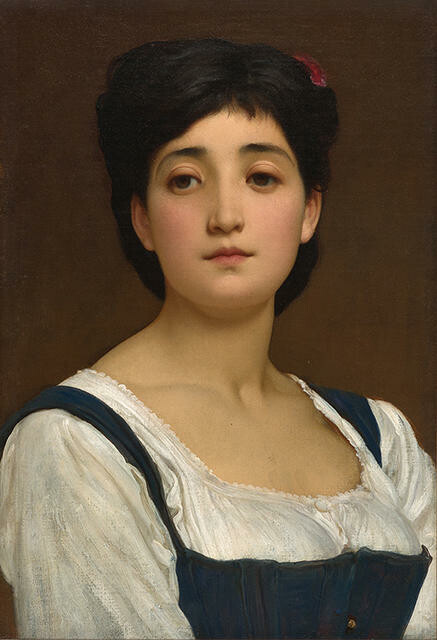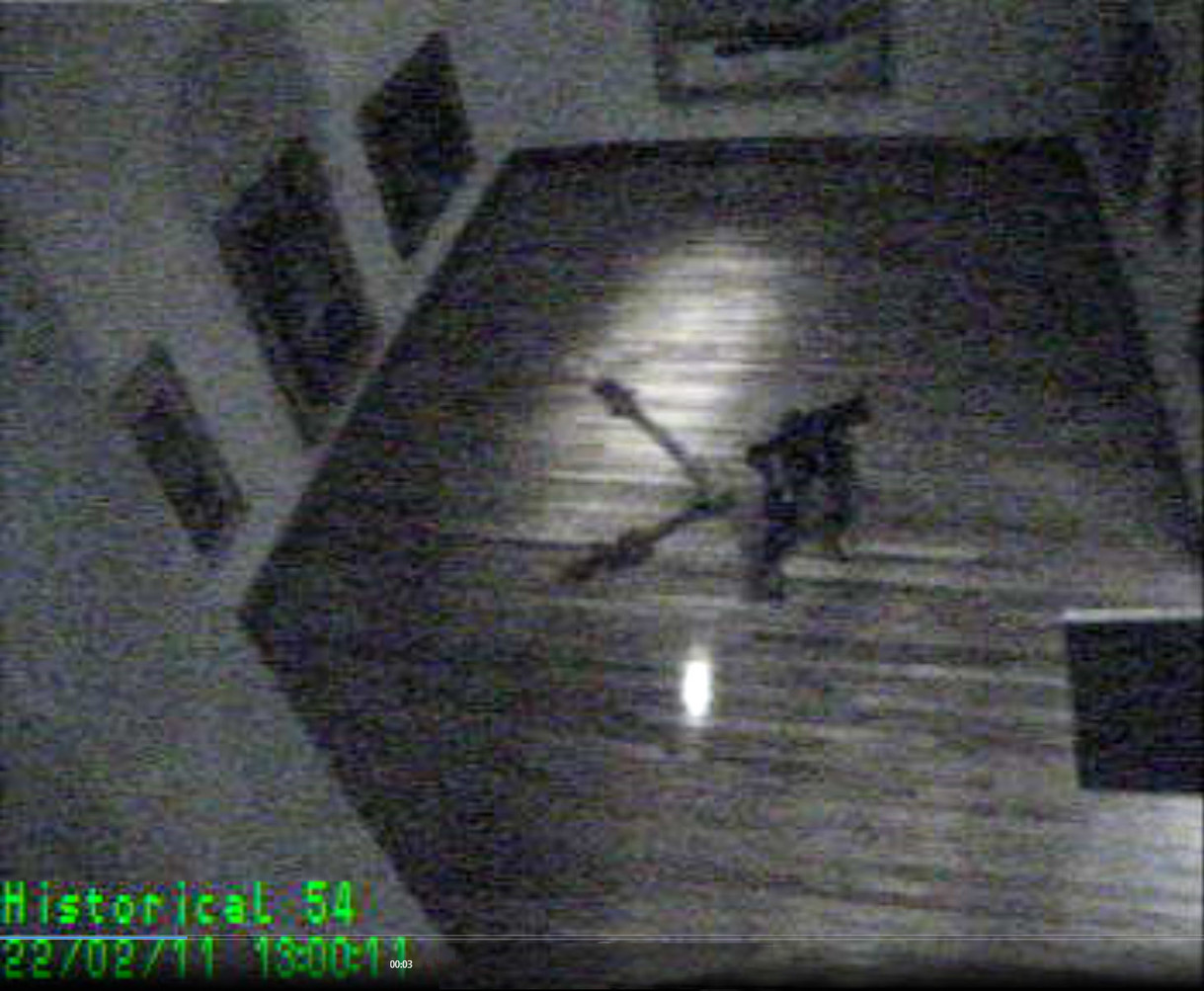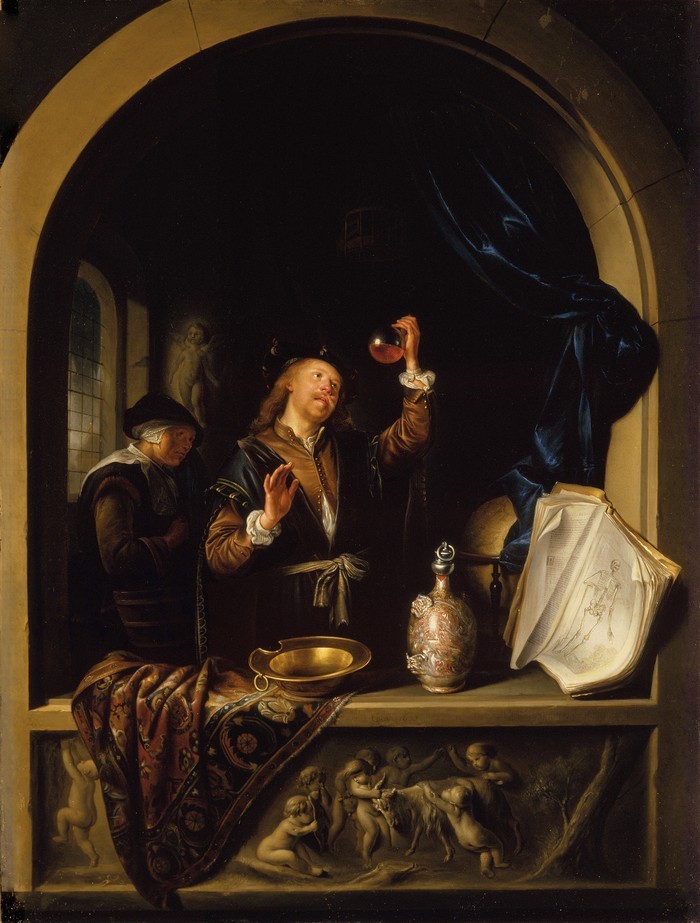Frances Hodgkins
Aotearoa New Zealand, b.1869, d.1947
Unshatterable (Belgian Refugees)
- 1916
- Oil on canvas
- Purchased with the assistance of the National Art Collections Fund, London, 1980
- 875 x 950mm
- 80/80
Tags: anxiety, children (people by age group), families, group portraits, infants, mothers, people (agents), refugees, smoke (material), women (female humans)
The Dunedin-born Frances Hodgkins was running her own watercolour painting school in Paris when World War I broke out in 1914. She relocated to St. Ives in Cornwall, where she found many displaced Belgian families also living, and painted this work in response to their wretched plight. Unshatterable, one of her first oil paintings, was exhibited in London in 1916 and purchased by the painter Sir Cedric Morris. Dr Rodney Wilson, the Gallery’s director in 1980, visited Morris, and with assistance from the National Art Collections Fund, a British art charity, successfully secured this work for the Christchurch collection.
(Treasury: A Generous Legacy, 18 December 2015 – 27 November 2016)
Exhibition History
Frances Hodgkins has caught the anxiety and vulnerability of this refugee family, mirroring the situation of many Belgians who, during World War I, made their way to Britain. They were billeted throughout the country, including St Ives in Cornwall, where Hodgkins was living at the time. This is one of Hodgkins' earliest oil paintings and it has some of the hallmarks of her watercolour painting, with blended colours and a loose vigorous style.
Hodgkins was born in Dunedin. She studied at the Dunedin School of Art but in 1901 left New Zealand to study at the London Polytechnic. In 1903 she exhibited at the Royal Academy, the first New Zealander to have the honour of being ‘hung on the line’. Living in Paris between 1908 and 1912, Hodgkins taught at the Académie Colarossi, the first woman on the staff there. From 1913 Hodgkins settled in England. Throughout her career she exhibited with many art groups and galleries, including the Lefevre Galleries in London.
First exhibited in October 1916 at the International Society's Autumn Exhibition in London with the title 'Unshatterable', this painting was for many years also known informally as 'Belgian refugees'. (Label date 2009)
Until the second decade of this century New Zealand expatriate artist Frances Hodgkins had rarely worked in any other medium than watercolour. In 1908 she did some of her first oil paintings, but did not start using the oils seriously until 1915. Then she used methods more akin to watercolour. This painting is among her earliest works in the oil medium.
It was also painted at a time when she was experimenting stylistically. Having lived in Paris and held a studio there she became deeply interested in the work of Cezanne, other Post-Impressionist artists and Picasso.
There are elements in this interest apparent in Belgian Refugees particularly in the strong modelling of forms, especially the boy on the left. The whole composition grouping is reminiscent of Picasso’s Rose Period group of the clowns in Les Saltimbanques
The subject for this painting was a family of refugees from Belgium, which in 1916 was being torn apart by the effects of World War One. Many families were sent to England and billeted around the country. Some went to St Ives where Hodgkins was living at that time. (Label date unknown)


